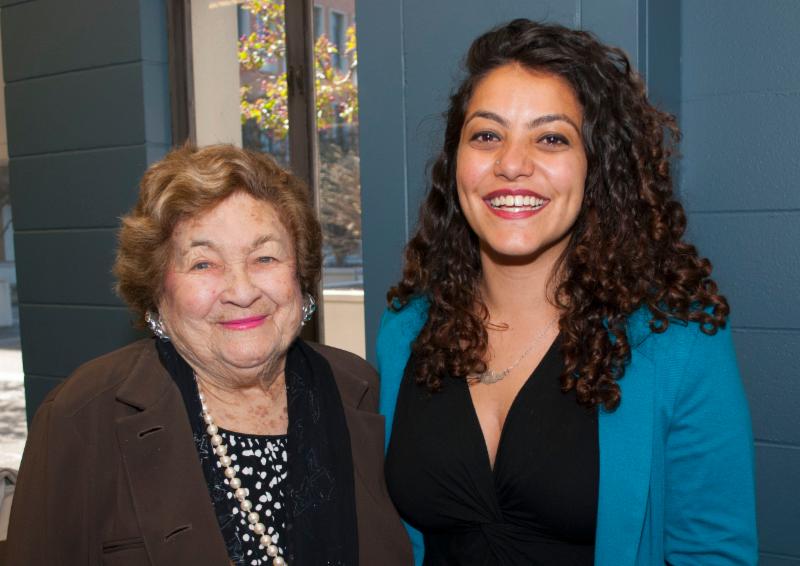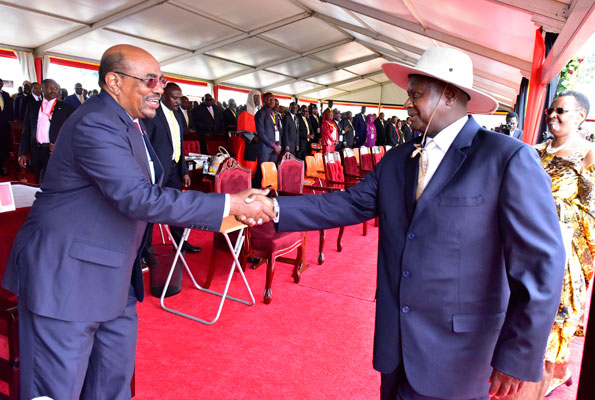In early March, 10-year-old Ariana Mangolamara committed suicide in the Aboriginal community of Looma in Western Australia. Her death wasn’t unique: she wasn’t the first in her community or even her family to commit suicide. However, her story gripped international headlines and prompted a soul-searching analysis of why the plight of Australia’s indigenous peoples is worse than ever, despite formal political recognition and efforts to help. Many of these efforts seem designed to destabilize Aboriginal communities through systematic neglect, the breaking of families through child removal and a callous disregard for culturally viable strategies.
On July 13, 2016, after more than 23 years of its enactment, the “General Amnesty Act for the Consolidation of Peace” was declared unconstitutional by the Constitutional Chamber of the Supreme Court of Justice of El Salvador. In what has become a landmark ruling for the victims of the armed conflict, the highest court of justice has opened up the possibility to try those people from both warring parties who perpetrated the most egregious international crimes during one of the bloodiest wars that took place in Latin America in the twentieth century.
The Center for Holocaust and Genocide Studies Director, Dr. Alejandro authored this article in response to the recent passing of Elie Wiesel. It appeared in the July 6th issue of the Minneapolis Star Tribune.
With the passing of Elie Wiesel, genocide education has lost its most important advocate. I write “genocide” and not Holocaust, in order to make a point.
 There are many that contend today that the Holocaust’s global presence and iconic status obscures other forms of mass violence, and even the acknowledgment of other genocides. Elie Wiesel’s seminal role in Holocaust memorialization worldwide demonstrates exactly the opposite. The proliferation of Holocaust remembrance, education and research efforts has been extraordinarily influential in the moral and political debates about atrocities, and in raising the level of attention to past violence and responsiveness to present genocide and other forms of gross human rights violations.
There are many that contend today that the Holocaust’s global presence and iconic status obscures other forms of mass violence, and even the acknowledgment of other genocides. Elie Wiesel’s seminal role in Holocaust memorialization worldwide demonstrates exactly the opposite. The proliferation of Holocaust remembrance, education and research efforts has been extraordinarily influential in the moral and political debates about atrocities, and in raising the level of attention to past violence and responsiveness to present genocide and other forms of gross human rights violations.
Continue reading on the Star Tribune website.
 Elie Wiesel had a profound effect on my life. In 1997 I embarked on a journey to earn my Master’s degree from the University of Minnesota. At the time that I began my classes I had no thoughts of studying the Holocaust, but through a series of small events, I found myself thinking of nothing else. I do not remember when I read Night, nor do I recall what led me to return to Wiesel’s work while in graduate school. For some reason I turned to a little known collection of his short stories titled One Generation After, published in 1970. How the book found its way from my mother’s bookshelf to mine is not clear, but for some reason, I picked it up and read it. The story that changed my life was “The Watch.” Over the course of six pages, Wiesel tells of his return to his home of Sighet, Romania and the clandestine mission he undertakes to recover the watch given to him by his parents on the eve of his Bar Mitzvah. It is the last gift he received prior to being transported with his family to Auschwitz. Like many Jewish families, fearing the unknown and hoping for an eventual return, he buried it in the backyard of their home. Miraculously, he finds it, and quickly begins to dream of bringing it back to life. However, in the end he decides to put it back in its resting place. He hopes that some future child will dig it up and realize that once Jewish children had lived and sadly been robbed of their lives there. For Wiesel the town is no longer another town, it is the face of that watch.
Elie Wiesel had a profound effect on my life. In 1997 I embarked on a journey to earn my Master’s degree from the University of Minnesota. At the time that I began my classes I had no thoughts of studying the Holocaust, but through a series of small events, I found myself thinking of nothing else. I do not remember when I read Night, nor do I recall what led me to return to Wiesel’s work while in graduate school. For some reason I turned to a little known collection of his short stories titled One Generation After, published in 1970. How the book found its way from my mother’s bookshelf to mine is not clear, but for some reason, I picked it up and read it. The story that changed my life was “The Watch.” Over the course of six pages, Wiesel tells of his return to his home of Sighet, Romania and the clandestine mission he undertakes to recover the watch given to him by his parents on the eve of his Bar Mitzvah. It is the last gift he received prior to being transported with his family to Auschwitz. Like many Jewish families, fearing the unknown and hoping for an eventual return, he buried it in the backyard of their home. Miraculously, he finds it, and quickly begins to dream of bringing it back to life. However, in the end he decides to put it back in its resting place. He hopes that some future child will dig it up and realize that once Jewish children had lived and sadly been robbed of their lives there. For Wiesel the town is no longer another town, it is the face of that watch.In her research as part of Alejandro Baer’s course, SOC 4315 “Never Again! Memory & Politics after Genocide,” Alana Erickson reviewed media coverage of violence against Yazidi women in territory controlled by the Islamic State (IS). Below is a reflection of her work.
Looking at the repeated recounting of women’s traumatic experiences in the gory detailed articles across my news log, I find the descriptions of the crimes often gratuitous. I am critical of the use of descriptive stories and recounts of sexual violence perpetrated against Yazidi women by Daesh / the Islamic State (IS). Why are the writers choosing to use these descriptions or leaving them out completely? I am aware that these are real atrocities which happened, and part of reporting on them may include telling things that horrify any sensible reader. However I found myself avoiding logging the more horrible articles in my research, and instead writing them off as pointlessly evocative. I believe that there is something very powerful at play under the surface of these representations of the trafficking and sexual violence of Yazidi women in the news.
This is the first in a series of articles highlighting the work of University of Minnesota students associated with the Center. Our first student Miray Philips, was recently awarded Bernard and Fern Badzin Fellow in Genocide and Holocaust Studies for the 2016-2017 Academic Year.

Miray was born in Egypt, raised in Kuwait, and moved to Michigan to pursue a college education. She graduated from the University of Michigan, Ann Arbor with a BS in Psychology and Sociology. She then moved to Minnesota to begin her PhD in Sociology, with a focus on violence, collective memory, and the Middle East and North Africa. She is broadly interested in the experiences of ethnic and religious minority groups within the Middle East and North Africa, specifically as it pertains to persecution, discrimination and violence.
Miray Philips’s current research is focused on understanding how the Coptic Christian community in Egypt and the diaspora makes sense of their present day experiences in light of a long history of suffering and persecution, and in turn how that history informs their present-day experiences. While Copts in Egypt face persecution and discrimination at the hands of the state and civil society, Copts in Kuwait are at the difficult intersection of being a religious minority and also expats. Copts in the US, however, experience relative privilege in a predominantly Christian country. During the fellowship year she will be completing course work and interviewing Copts in Egypt, Kuwait and the US.
On the occasion of the 40th anniversary of the end of World War II, on May 8th 1985, German President Richard von Weiszäcker addressed the country’s parliament with the following words: “All of us, whether guilty or not, whether young or old, must accept the past. We are all affected by the consequences and liable for it. We Germans must look truth straight in the eye – without embellishment and without distortion.”
Weiszäcker’s speech became a milestone in the distinctively German process known as Vergangenheitsbewältigung (a composite German word which can be best rendered in English as the struggle to overcome or confront the [criminal] past.) Acknowledging the Holocaust and other atrocities committed by Germany during WWII was not an easy process. Weizäcker’s speech challenged persisting idealized or self-victimized national narratives, and it undermined citizens’ identification with their history.
In April, the University of Minnesota welcomed Pulitzer Prize winning author Peter Balakian to campus for the 2016 Ohanessian lecture, organized by Prof. Ana Forcinito (Dept. of Spanish and Portuguese Studies) and sponsored in part by the Center for Holocaust & Genocide Studies. Dr. Balakian spoke about the cultural destruction that occurred during the Armenian Genocide. You can watch the presentation here:
Be sure to check out the CHGS blog in the coming weeks for an exciting interview with Dr. Balakian, discussing his work and the growing movement towards recognizing the Armenian Genocide.
This morning, Germany became the thirtieth country to officially recognize the massacre of Armenians at the hands of the Ottomans a century ago as genocide. Although Germany’s recognition comes after several other nations made similar declarations since last April, several factors make the Bundestag’s resolution especially unique: historical ties, the war in Syria and Germany’s own immigrant history all culminate to make today’s news a momentous occasion.
This month’s contribution is by Fata Acquoi, who recently graduated with a double major in Sociology and Political Science at the UMN. She intends on pursuing a graduate degree in Human Rights. Her contribution is a snippet of a class assignment that focused on the role of the international community in dealing with alleged perpetrators of genocide and mass atrocity.

The conflict in Darfur has widely been recognized as the first “genocide” of the twenty-first century. Though this recognition is well-known, the 2008 joint United Nations and African Union peacekeeping mission to Darfur failed to stop the genocide, and more specifically the ethnic-cleansing program enacted by the current regime in Darfur. This included rape and torture of women and children. According to the Sudan Democracy First Group, a coalition of civil society organizations, there are about two million Internally Displaced Persons in Darfur, of which over 200,000 were displaced in 2015 alone. This suffering is widely felt throughout Darfur, and has not diminished, though it seems that concern for these people by the international community certainly has diminished.
The International Criminal Court (ICC) has issued warrants for Omar Hassan al-Bashir, the head of the Sudanese regime for more than twenty-five years. These warrants are for crimes against humanity and multiple counts of genocide. Though nations have been notified about the warrants for al-Bashir’s arrest, it is unlikely that we will see his prosecution. more...
